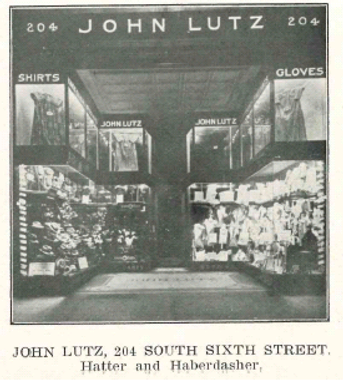
1870s Fashion
1870s Fashion
The Trends
The Trends
The Trends
Sartorial Springfield

Daughters of John H. and Mary L. Lloyd 131 S. Douglas, 1915
Image courtesy of the Sangamon Valley Collection

Frank Leslie's Lady's Magazine 43, no. 2 (July-Dec 1878): 168.
Sartorial Springfield is a public history project inspired by fashion and society, the duality of clothing as art, and the symbolism its creation and wear conveys. It is the goal of this project to study Springfield, Illinois residents of all races, ages, and economic backgrounds from 1870 to 1915 through photography and consumer practices. This was a time of great change in the country, but a currently understudied period of Springfield history. With the United States entrance into the war in Europe, the influence of war-time measures, the rise of youth-culture, and reliance on ready-made clothing would change fashion forever. It would no longer be dictated solely by the wealthy, but rather personal taste, female autonomy, and the rise of subcultures would influence people's buying practices and clothing choices.
As the field of fashion history develops, its practice has fused theory with sociology, visual arts, and economics to describe fashion's place in the human experience. By utilizing these different lenses to understand fashion, a host of information can be inferred about an individual and the society in which they live. Sociologist Erving Goffman sees human interaction as a set of performances, and fashion as integral way of communicating each individual's place in the performance, or society. In this sense, clothing becomes a symbol or a non-verbal form of communication displaying personality traits, social roles, economic status, consumerist practices, and even political leanings which can be helpful in understanding the culture of the time.
Early photography was a luxury and because of this, portrait photography, and especially the images that survive for modern study, depict individuals of means or at least with some disposable income. It is not until the late 1880s with the mass production of the handheld camera that amateur and hobbyist photographers made it possible to view life outside of the portrait studio. While many of these staged photos are utilized to detail fashion trends, it is the candid photos of trips and street scenes that truly show the residents and nature of Springfield.
In addition to using photographs to discuss fashion trends, the growth of the fashion industry in Springfield and the ways in which people were marketed to plays an important role in resident's interaction with fashion and each other. Relying on business information and advertisements, maps have been created to document local fashion industry as a way to represent the physical growth of the city and the social importance of clothing and how we use it to connect with others. These employed methods and the material presented through this website will be the fusing of a visual and economic ethnography to document the citizen experience in Springfield.
Project Organization
Fashion and consumerism are the basis of this project but the foundation is the city of Springfield and it's residents. This page provides a brief history of the area and attempts to contextualize it's importance as a hub of Illinois history and culture.
A breakdown of period fashions accompanied by images, ephemera, and examples of the popular styles worn by Springfield residents. This aspect of the project will document both the trends of the era and the way in which they were advertised to the public.
The final section focuses on the downtown business district and the physicality and growth of fashion as a business. By utilizing directories, advertisements, and maps, the level of consumerist's dedication to fashion supports the importance of its use in gauging society.
Sources Utilized
Staged and Candid Photography

Photographed by James A. W. Pittman,
Image courtesy of Richard E. Hart

The Booth Grunendike Photograph Collection
Image courtesy of the Sangamon Valley Collection

Carroll Sisters, c. 1910
Image courtesy of the Sangamon Valley Collection

Photographed by William Truesdell, 1884-88
Image courtesy of Richard E. Hart
Printed Ephemera

Officer & Peabody Advertisement
Springfield City Directory 1874.

The Delineator 33, no. 6 (1889): 377.
.jpg)
Harper's Bazaar 30, no. 28 (1897): 1.
Downtown Business
Statistics and History

Springfield City Directory 1874, 76-77.

Springfield Illustrated, 1889, 69.
Courtesy of the Illinois State Library

Springfield: The Capital of the State of Illinois, 1912 Courtesy Sangamon Valley Colllection

1913 Business District,
Courtesy of the Sangamon County Historical Society
[1] Erving Goffman, Presentation of Self in Everyday Life, (University of Edinburgh, 1956), 14.
[2] Mia Fineman, "Kodak and the Rise of Amateur Photography," Heilbrunn Timeline of Art History, last modified October 2004, Accessed June 22, 2018, https://www.metmuseum.org/toah/hd/kodk/hd_kodk.htm.